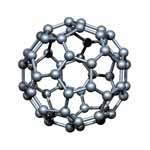C60 increases gain in organic-metal-semiconductor transistors

I. A. Hümmelgen and group of scientists from Brazil and UK implemented C60 to metal-base transistor technology.
They used evaporated C60 as the emitter in a vertical transistor structure with Au base and Si collector. The proportion of emitted electrons that overcome the barrier is measured as at least 0.99. This metal-base transistor is easy to fabricate as it does not involve wafer bonding or require perfect semiconductor-on-metal growth.
Recent article has been published in Applied Physics Letters (Vol. 84, No. 20, pp. 3978–3980)
All-inorganic metal-base transistors (MBT) with magnetic base have attracted great interest for use as sensors. The spin-valve effect (also called giant magnetoresistance) has led to an intense research activity worldwide, motivated both by the enormous potential for read heads for magnetic recording and the fundamental interest of the physical phenomena. Since its discovery in 1988, magnetic-field sensors based on the giant magnetoresistance of magnetic multilayers have been the subject of much investigation.
Nevertheless, inorganic MBTs have very low current gains, as well as being difficult to fabricate. These problems may be overcome with the use of an organic emitter.
The MBT consists of an ultrathin metal layer (the base), sandwiched between two semiconductors (the emitter and the collector). Like a conventional bipolar transistor, the MBT is a three-terminal device with a forward biased emitter-base junction and a reverse-biased base-collector junction. However, in the MBT these are Schottky junctions rather than p–n junctions.
A straightforward modification to the basic MBT design that authors introduced solves both of the problems present in conventional inorganic MBTs mentioned above, though at the cost of requiring high operating potentials. This improvement is achieved using fullerene C60 as the emitter material. It demonstrates the feasibility of using organic materials as the emitter in hybrid organic–inorganic transistor structures functioning by the injection of a current across an ultrathin base layer.



















